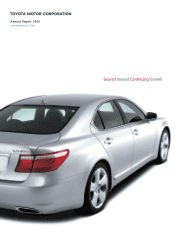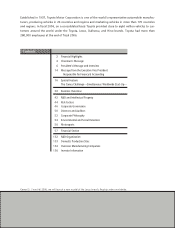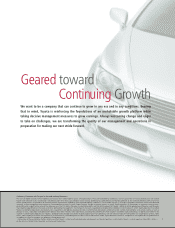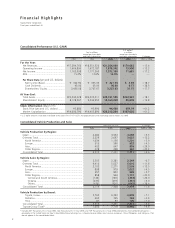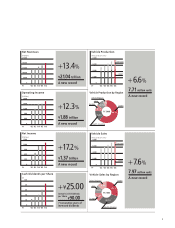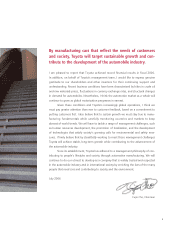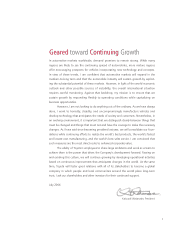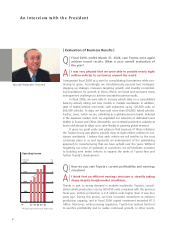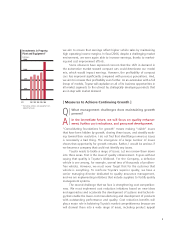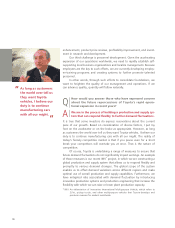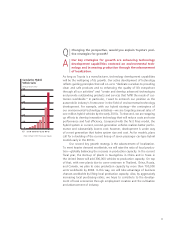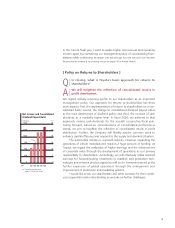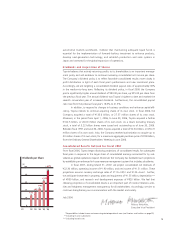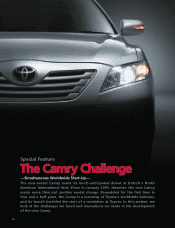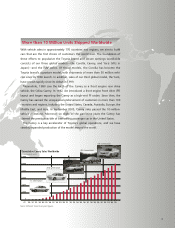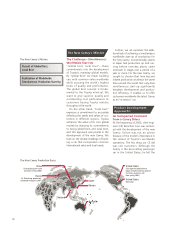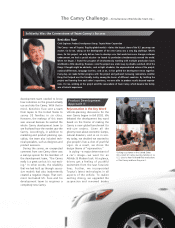Toyota 2006 Annual Report Download - page 11
Download and view the complete annual report
Please find page 11 of the 2006 Toyota annual report below. You can navigate through the pages in the report by either clicking on the pages listed below, or by using the keyword search tool below to find specific information within the annual report.
9
we aim to ensure that earnings reflect higher vehicle sales by maintaining
high operating income margins. In fiscal 2006, despite a challenging market
environment, we were again able to increase earnings, thanks to market-
ing and cost improvement efforts.
Some observers have expressed concern that the shift in demand in
the automotive market toward compact cars could deteriorate our model
mix, which would impact earnings. However, the profitability of compact
cars has improved significantly compared with previous generations. And,
we aim to increase their profitability even further. As an automaker with a full
lineup of models, Toyota will capitalize on all of its business opportunities in
all market segments to the utmost by strategically developing products that
are in step with market demand.
[ Measures to Achieve Continuing Growth ]
What management challenges does maintaining growth
present?
In the immediate future, we will focus on quality enhance-
ment, further cost reductions, and personnel development.
“Consolidating foundations for growth” means making “visible” issues
that have been hidden by growth, sharing these issues, and steadily work-
ing toward their resolution. I do not feel that identifying numerous issues
is necessarily a bad thing. The emergence of a large number of issues
shows that opportunity for growth remains. Rather, I would be anxious if
we became a company that could not identify any issues.
Toyota needs to tackle a range of issues. Let me narrow them down
into three areas. First is the issue of quality enhancement. It goes without
saying that quality is Toyota’s lifeblood. For the Company, a defective
vehicle is one among, for example, several tens of thousands of problem-
free vehicles. However, we must never forget that for the customer that
vehicle is everything. To reinforce Toyota’s superior quality, we have a
senior managing director dedicated to quality assurance management,
and we are implementing initiatives that include suppliers to fortify quality
management systems.
The second challenge that we face is strengthening cost competitive-
ness. We must implement cost reduction initiatives based on new ideas
and approaches and accelerate the development of systems and technolo-
gy that enable the lower-cost manufacturing and development of products
with outstanding performance and quality. Cost reduction benefits will
play a major role in bolstering Toyota’s market competitiveness because we
will channel them into a wide range of areas, including product appeal
800
400
1,200
1,600
’02 ’03 ’04 ’05 ’06
0
Investments in Property,
Plant and Equipment*
(¥ Billion)
FY
* Excluding vehicles and equipment on
operating leases
Q
A

